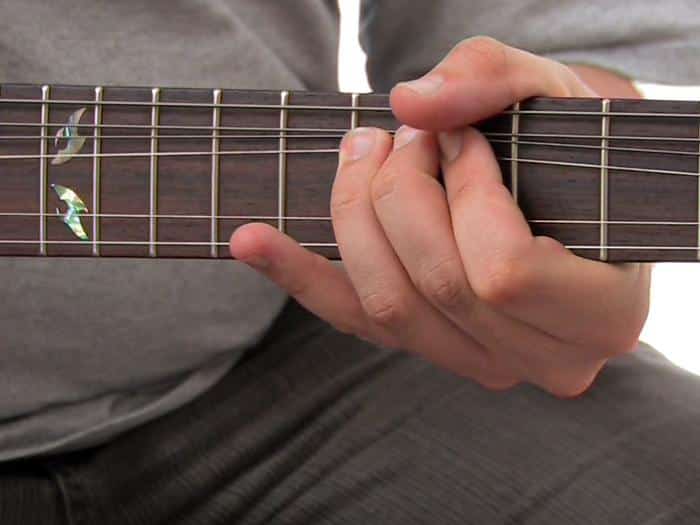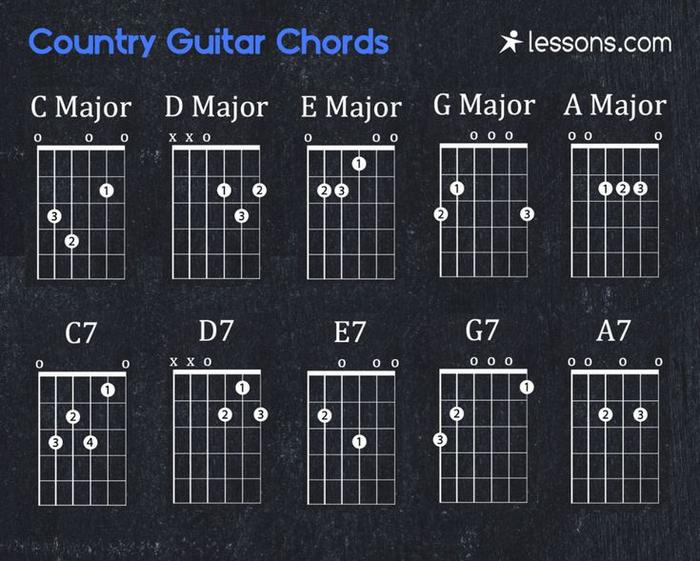Ever felt the hairs stand up on your arm at the twang of a country guitar solo? I’m willing to bet a dazzling Nashville Sunday that it’s all down to one thing: country guitar scales. As a long-term resident of this hallowed hub of country music, I’ve witnessed first-hand how these scale structures create the idyllic, foot-tapping soundtrack of the American heartland.
Country guitar scales are the unsung heroes, underpinning those melodic narratives we’ve come to love. They’re the backbone of the soulful ballads, the mellow ride-along tunes, and the honky-tonk anthems that fill our airwaves. And yet, despite their fundamental role, they often play second fiddle, hidden behind the songs’ lyrics and chords.
Now, I felt an irresistible urge to draw back the curtain on this essential aspect of country music. Across countless jam sessions, gigs, and songwriting hours, I’ve seen the transformative power of mastering these scales. And I’m going to let you in on something. Becoming fluent in country guitar scales can significantly up your playing ability, and guess what? It’s closer to your grasp than you might think. Ready for the odyssey? Strap on a guitar, tune those strings, and let’s conquer the vibrant world of country guitar scales.
Understanding Guitar Scales
Major Pentatonic Scale

Transitioning into the heart of country music scales, let’s delve into the Major Pentatonic Scale. This crucial scale shapes the melody and tonal flavor of most country tunes due to its stunning simplicity and versatility.
Reflecting on my own journey, the Major Pentatonic Scale has always been a cornerstone. From the staple lick of many a country song, I’ve relied heavily on it in my teaching materials and practice routines. Its relevance is as significant as it is timeless; it acts as the backbone, giving life to the emotive bends and soulful runs that define country music.
In essence, mastering the Major Pentatonic Scale is foundational in country guitar playing. A fine appreciation for its nuances can radically shape your connection with country music, lending soul and depth to your performances. And while this might seem daunting at first, don’t fret. Remember, all it takes is consistent practice and an open mind to explore its potential.
As we venture forth into other scales, like the Mixolydian or the Blues Scale, you’ll find that they, too, draw from the Major Pentatonic. Thus, a solid grasp of it actively enriches your understanding, practice, and application of further scales.
Mixolydian Scale

Moving forward from the major pentatonic scale, the Mixolydian scale demands our attention. Deeply integral to the distinct sound of country music, it’s often employed to produce melodies which paint vivid soundscapes reminiscent of wide-open country fields. I’ve witnessed the transformative effect the Mixolydian scale can have on an ordinary melody, especially in my guitar arrangements for Guitar One magazine.
The Mixolydian scale deviates just slightly from the major scale; it has a flattened seventh note. However, this slight variation adds an eminence of tension and resolve, capable of turning traditional melodies into evocative storytelling tools. It’s that very characteristic of the Mixolydian scale that allows it to contribute uniquely to a guitarist’s repertoire, providing the ‘twang’ that’s often associated with country music. This scale spices up plain-sounding compositions with its rich, flavorful notes.
Before we transition to the blues scale, spend valuable time grasping the nuances of the Mixolydian. It’s undoubtedly a key component in our journey towards mastering the scales prevalent in country guitar. As witnessed through my experiences, it not only provides a foundation for complex melodies but is also a significant pathway to understanding the nature of other scales.
Blues Scale

As we dive deeper into the realm of country guitar scales, the significance of the Blues scale truly stands out. During my time with the Hal Leonard Corporation, I discovered firsthand the remarkable interplay of this scale within country music. The Blues scale, with its quintessential ‘flat fifth’ note, infuses heart, depth, and raw soul into country melodies, creating a compelling musical narrative that speaks directly to the listener’s emotions.
The Blues scale’s relevance in country music lies in its versatility. It harmoniously complements other major scales, adding an edge to their smooth transitions. This seamless blend of melody and rhythm unmistakably defines the unique character of country music. Understanding and mastering this scale is therefore a key step in becoming a skilled and expressive country guitarist.
In my professional journey, I’ve realized that the Blues scale’s infusion into country music amplifies the texture and emotional depth of a piece. On your journey of mastering the guitar, I invite you to explore the magic of the Blues scale and all its remarkable contributions to country music. As we proceed to our next section on applying these scales, remember the influence and transformative power of the Blues scale.
Applying Guitar Scales
String Bending Techniques

After understanding ‘Applying Guitar Scales’, we move to one of the most beloved aspects of the country guitarist’s toolkit: string bending techniques. It’s not an exaggeration to say that this is the secret elixir that breathes soul into many a classic country lick.
In my experience, string bending can transform a simple series of notes into a poignant expression of pathos or joy. The simple act of bending a string to reach a note, rather than just fretting it, adds a vocal-like quality; it’s akin to the emotive inflection in a singer’s voice. I’ve been sharing this technique with my students for years and I’ve seen firsthand the significant advancement it provides in their overall technique and expression.
When faultlessly applied, string bending encourages a seamless flow between scales, creating an evocative narrative often found in the melodies of country music’s greatest hits. Done right, string bending not only enhances your scales, but also forms an integral part of the country sound.
As we continue to explore other skills like pentatonic scale variations and formulating country chords, remember the power of string bending and its remarkable contribution to applying guitar scales within country music.
Pentatonic Scale Variations

Before we delve deeper into string bending techniques and chord formulation, let’s turn back to the pentatonic scale; a key component in mastering the art of country guitar. Over my years as a teacher, I’ve found that exploring pentatonic scale variations can truly elevate a student’s guitar playing, adding richness and depth to their sound.
There is magic in the pentatonic. However, its full impact often lies beyond the basic scale, hidden within its many variations. By incorporating these alternate note progressions, we can add complexity, character and charm to our strumming.
Remember, in applying guitar scales, every note should tell a story, express a feeling. When I play, or guide my students, there’s a special touch when we venture into the realms of these often overlooked pentatonic scale variations. It’s as if we’re not just creating music, but experiencing a shared journey of discovery and creativity – a testament to the beauty of the pentatonic.
As we move forward towards formulating country chords, keep these variations in mind. They are powerful tools, enhancing the groove and twang unique to country music, and will add unexpected nuance to your performance.
Formulating Country Chords

In my journey as a content editor for Guitar One magazine, I’ve had the privilege of breaking down and analyzing numerous country songs. The purpose? To understand the chord progressions that give them their unique flavor. What really fascinates me about chord progressions in country music is how versatile and often surprising they can be.
I remember initially thinking that most country songs were based on the same simple three-chord structure. But as I delved deeper into the nuances of this genre, I realized how off-base this assumption was. So, think all country songs have the same three-chord structure? Prepare to be surprised! Country music has a beautiful way of defying expectations when it comes to song arrangement. This is why I’m excited to share my knowledge and help you master formulating country chords to enrich your guitar playing repertoire.
From ballads that tug at your heartstrings to uplifting tunes that get your foot tapping, distinctive chord progressions in country music are at the crux of what makes each song a standalone piece of artwork. Working with and understanding these chord progressions are where the magic truly happens, where your fingers blend skill, intuition, and emotion to create music that resonates.
In the upcoming sections, we will unlock this surprising complexity together. I am thrilled to guide you in this journey, injecting the chords’ unique character into your music and truly playing with feelings. So let’s giddy up and dive in!
FAQs
What are country guitar scales?
Country guitar scales are the building blocks of country music. They are specific combinations of notes that produce a particular series of tones when played. In country music, the major pentatonic, blues scale, and mixolydian mode are prominently used.
How can one master country guitar scales?
Mastering country guitar scales requires understanding the common scales used, practicing the scale patterns regularly, understanding how to apply the scales in a musical context, and creating licks from these scales.
What is the importance of practicing country guitar scales?
Practicing country guitar scales helps improve finger dexterity, tone quality, musical phrasing, and helps in understanding the fretboard more effectively. It also develops the ability to play melodies, riffs, solos, and improvisations used frequently in country music.
What is the structure of a major pentatonic scale?
The structure of a major pentatonic scale encompasses five notes per octave and the pattern it follows is “whole, whole, minor third, whole, minor third”.
Conclusion
So, is mastering country guitar scales a one-way ticket to country guitar proficiency? Reflecting on our journey, the understanding and practice of guitar scales is indeed a crucial step forward. Over the years, I’ve seen firsthand the transformative power they carry in shaping one’s style and sound – country music especially.
Country guitar scales form the foundation of our melodic language. They enable us to convey our unique musical ideas and emphasize the specific tones that give country music its distinct character. Whether it be the ‘happy’ Major Pentatonic, the ‘dominant’ Mixolydian, or the ‘gritty’ Blues scale, each imparts a unique flavor.
When combined with techniques like string bending and pentatonic scale variations, the possibilities are endless. The rich tapestry of sounds and styles awaiting you is truly astounding, right down to formulating your own country chords.
Therefore, invest your time in learning these scales. This isn’t just about technical proficiency, but also about the pure joy and freedom that comes with exploring your own creative potential. It’s been a rewarding journey with you so far, happy strumming!
